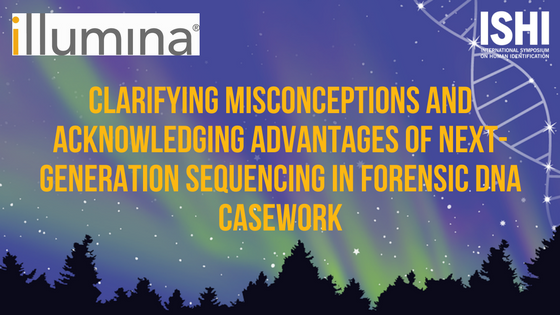Honored to be a part of the Forensic DNA community for nearly a decade, I’ve witnessed what I would consider a rather slow evolution of technology. In recent years, I was excited to validate and implement the expanded multiplex kits, and thought I was experiencing “groundbreaking” change in forensic DNA testing. That is until I joined the Illumina Forensic Genomics team, and realized now I truly am part of a revolutionary undertaking to bring the benefits of next-generation sequencing (NGS) to the forensic DNA laboratory.
Submitted by: Illumina
As a self-declared progressive (yet skeptical) scientist, I arrived at Illumina with many questions, and admittedly had my own apprehensions about NGS. Having the opportunity to work hands-on with the MiSeq FGx Forensic Genomics System, and perform numerous studies and data analyses, I now recognize the undeniable capabilities and advantages of this system for DNA casework. I can envision the results I would have achieved for those frustrating cases where I just needed “a little more”, and I can feel the relief of not having to choose (or guess) if I should process that critical sexual assault sample with just aSTRs or Y-STRs.
As it turns out, all of my NGS apprehensions were due to lack of knowledge or misconceptions I had about the technology, some of which I’d like to share.
Illumina NGS is an established technology
Although targeted NGS is being newly applied to forensic testing, it’s not a new technology. Illumina sequencing by synthesis (SBS) technology has been available for nearly a decade, and is a recognized leader in NGS with over 90% of the world’s sequencing data generated using Illumina platforms. NGS spans multiple different scientific disciplines to include clinical and diagnostics, oncology, and whole genome sequencing research. Illumina NGS technology has the ability to revolutionize forensic DNA testing, just as it currently is or has for many other fields.
We do need more loci for sample comparisons AND we need them all at once
The MiSeq FGx Systems’ expanded multiplexing capabilities allow for simultaneous amplification of up to 230 polymorphic markers (aSTRs, Y-STRs, X-STRs, SNPs and Amelogenin). While this may not be essential for the elusive “perfect world”, high quality/quantity, single source evidence sample, it is absolutely critical for low-level, inhibited, degraded, partial, mixed, or “all of the above” sample types. These challenging samples are now routine in forensic DNA casework. The increased information we’re able to obtain with this dense multiplex gives us the potential to turn inconclusive reporting into confident, data-driven inclusions and exclusions.
SNPs are a powerful forensic tool
Only having ever worked with STRs, I was unsure how helpful SNPs would be. With improved technology enabling us to process 94 identity SNPs (iSNPs) as a “bonus” in conjunction with all of our STRs, iSNPs do provide additional power of discrimination. The smaller amplicon sizes (down to 63 base pairs) offer substantial improvements for degraded DNA sample results. In addition to identity SNPs, ancestry and phenotypic SNPs may also be processed (if desired) to provide investigative leads in otherwise dead end cases.
Illumina NGS is uncomplicated to learn and implement
Although library preparation was new to me, it was quickly “demystified” when I realized it consists of common molecular biology procedures, such as PCR amplification and bead-based washes, and it’s compatible with existing upstream extraction and quantification protocols. The DNA sequencing reaction components are contained in a pre-loaded reagent cartridge which gets put on the FGx instrument for walk-away automation.
Illumina NGS is here NOW
The MiSeq FGx System (to include library prep kit, instrument, and data analysis software) is developmental validation complete per current SWGDAM validation guidelines. The system has already “hit the bench” in several laboratories around the country and world who are currently conducting their own internal evaluations.
The fundamental principles of data interpretation remain unchanged
The ForenSeq Universal Analysis software “deciphers” the sequence information for us and displays data in a familiar, allele call (repeat number) format. We still evaluate our data for number of allele calls, relative intensity and proportions of potential contributors, and determine possible allele combinations for comparison to reference standards.
I saved the data interpretation point for last, as it has been the most impactful for me and I believe it will be for the community as well. I came into the NGS world anticipating that much of the invaluable data analysis experience I had gained as a casework analyst would be lost on this “new” data. However, with basic training, I found myself “up and running” analyzing NGS mixture profiles using my previous CE experience. It was this subtle yet profound awareness that made me realize the forensic DNA community is not starting over by any means, we’re just moving forward.
Meghan Didier, MS
Senior Forensic Scientist, Illumina


